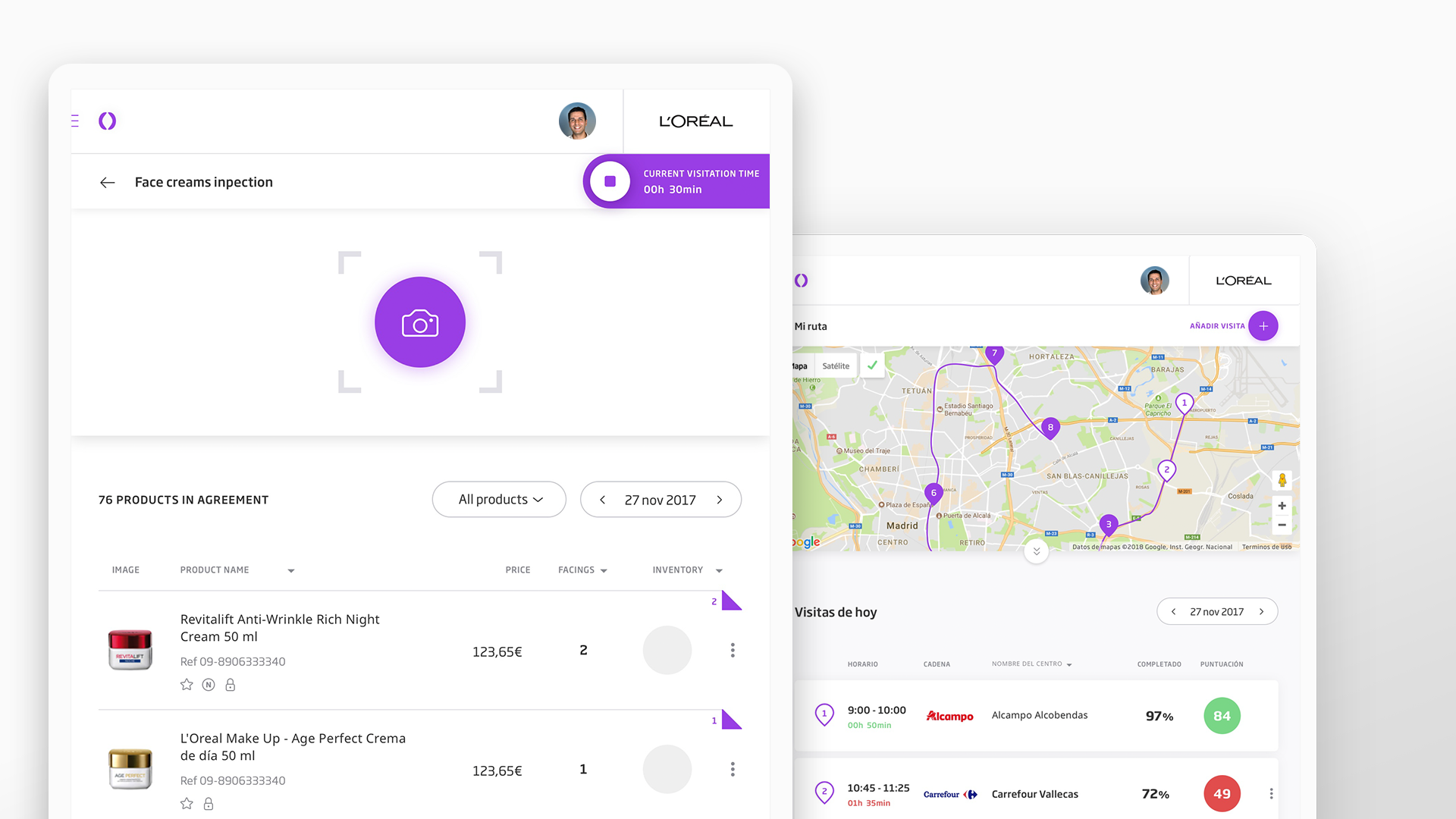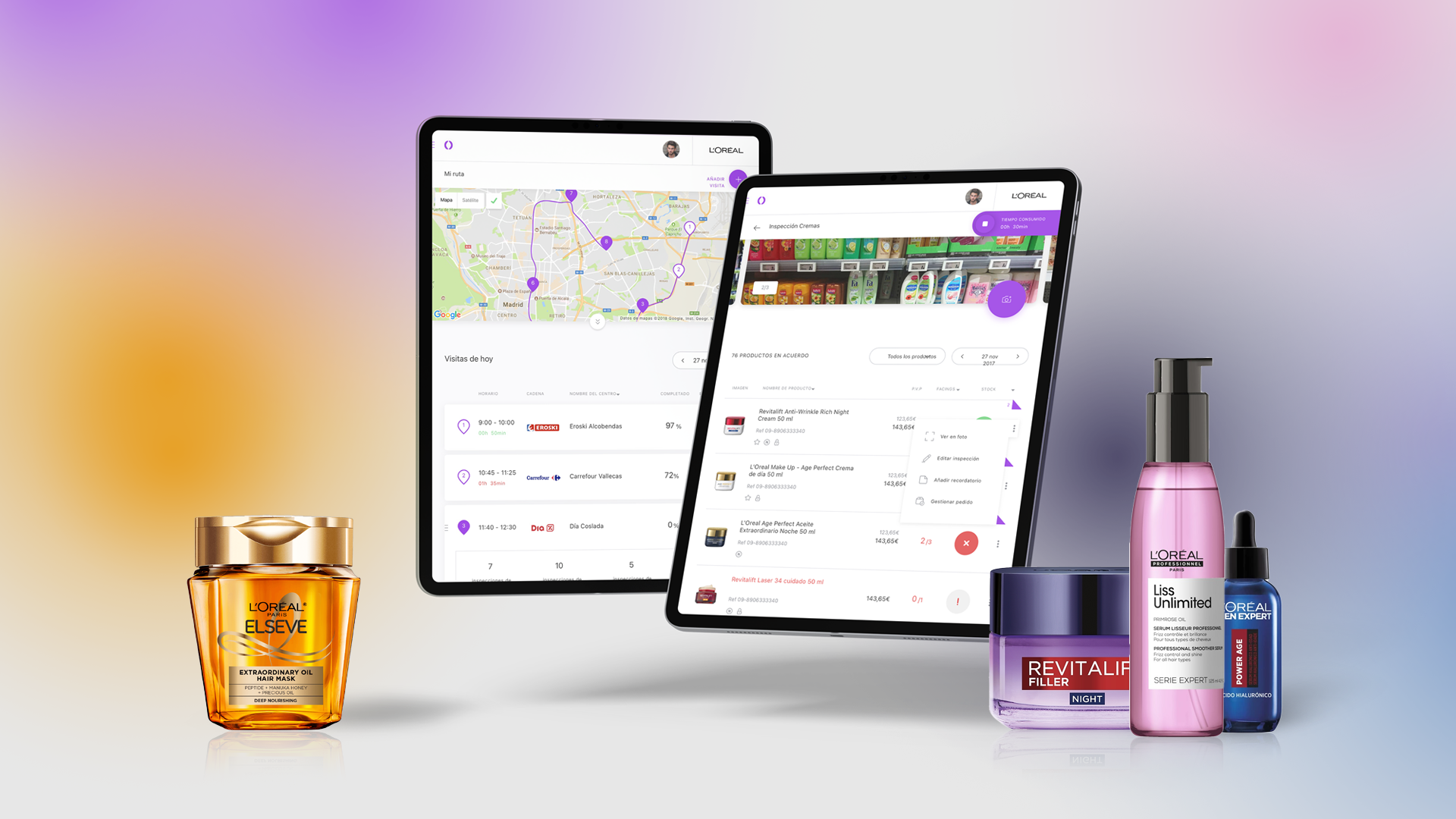
Design of smart A.I. retail platform
The challenge: brand managers and sales teams face the daunting task of monitoring and managing on-shelf product availability across hundreds of stores, often relying on disconnected and non-integrated tools.
The Solution: A user-centric, validated platform designed specifically for Key Account Managers, offering intuitive dashboards and mobile tools. Equipped with image recognition and data analytics, it empowers teams visiting retailers to track performance and uncover actionable insights effortlessly.
Client
Minsait, an Indra company
Scope
UX Research
UX Design
UI Design
Prototyping
Context
001
Why the need for a Smart AI Retail platform?
For a leading global cosmetics brand like L’Oréal or a beverages brand like Heineken, field sales operations are critical. Sales representatives visit physical stores to assess product placement, availability, and competitor activity. However, their work was previously fragmented, spread across multiple software, manual spreadsheets, and disconnected tools. Key account managers had little visibility into what was happening in the field in real time.
To be competitive in the Smart Retail market, we needed to consolidate this scattered ecosystem into a unified, efficient, and data-driven platform, leveraging AI technologies such as image recognition and advanced data analysis. These innovations allow for enhanced insights and real-time decision-making.
Our goal was building a tool that:
- Provides real-time visibility to HQ and key account managers using AI-powered analytics and image recognition.
- Streamlines data collection for field sales reps with automated image-based product assessments and actionable insights.
- Minimizes manual work and tool-hopping through intelligent data aggregation.
- Enables intelligent itinerary planning based on store priorities, performance, and AI-driven forecasts.
As a UX Designer, I led the design efforts across both:
- A tablet app used by the sales team in-store.
- A desktop dashboard used by managers and HQ teams.
This included user research, journey mapping, wireframing, high-fidelity UI, prototyping, and usability testing. I worked closely with product managers, data scientists, and engineers to ensure both technical feasibility and user needs were met.
Discovery
002
Understanding the industry
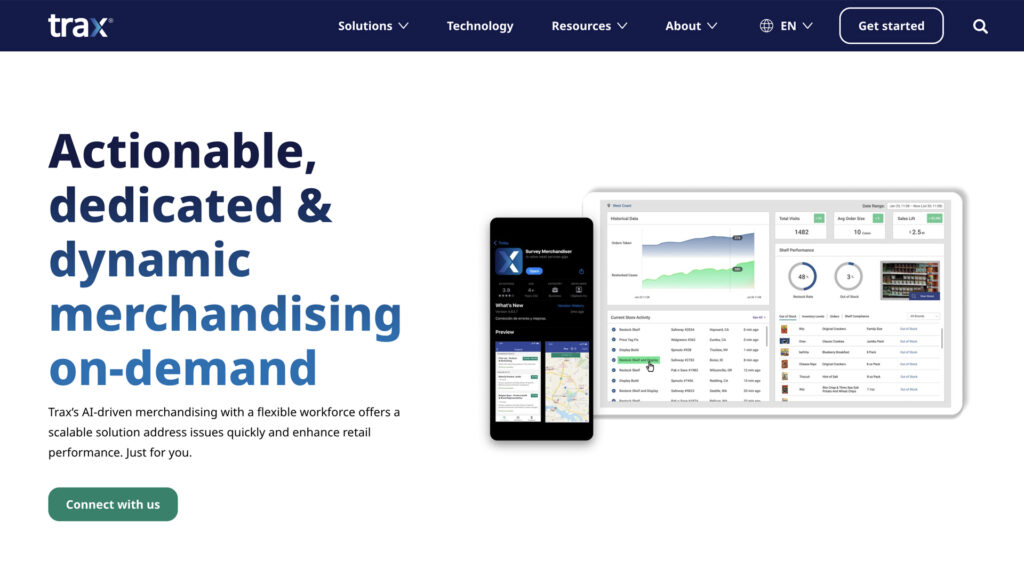
Desktop research
I compared AI-powered retail software, focusing on features, scalability, integration, pricing, and performance. The analysis included platforms for inventory management, customer analytics, and personalized shopping, evaluating their use of AI like machine learning and predictive analytics. This research identified strengths and weaknesses, helping to choose the best solution for retail needs.
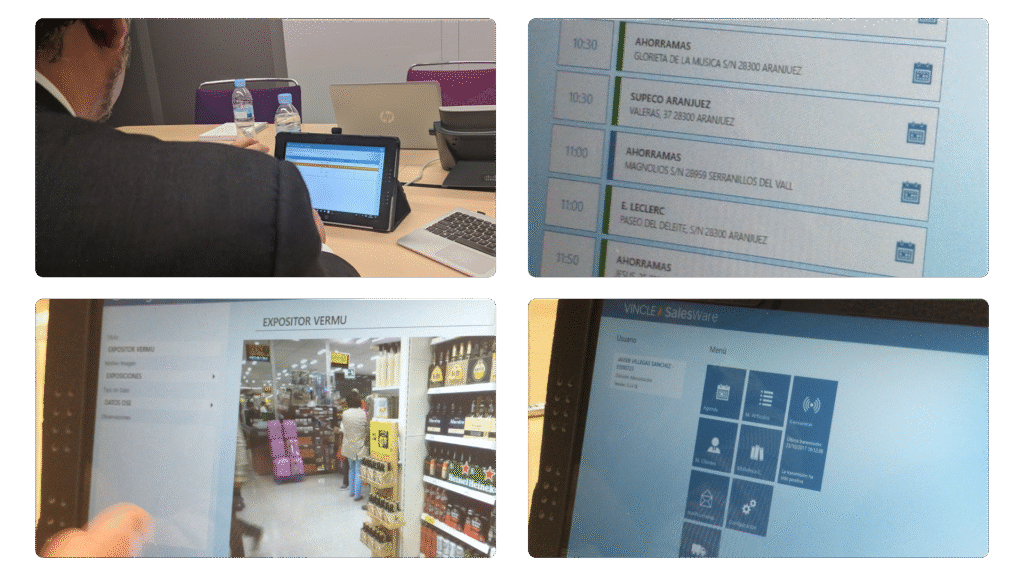
Expert interviews & User personas
After planning the research and recruiting professionals from Unilever, Capsa, Heineken, Carrefour or L’Oréal, I conducted expert interviews to gather insights and better understand the challenges they faced on daily basis. Based on these interviews, we defined user personas, capturing key behaviors, goals, and pain points. This helped us create a clear picture of the target audience, guiding the design and ensuring the product met real user needs.
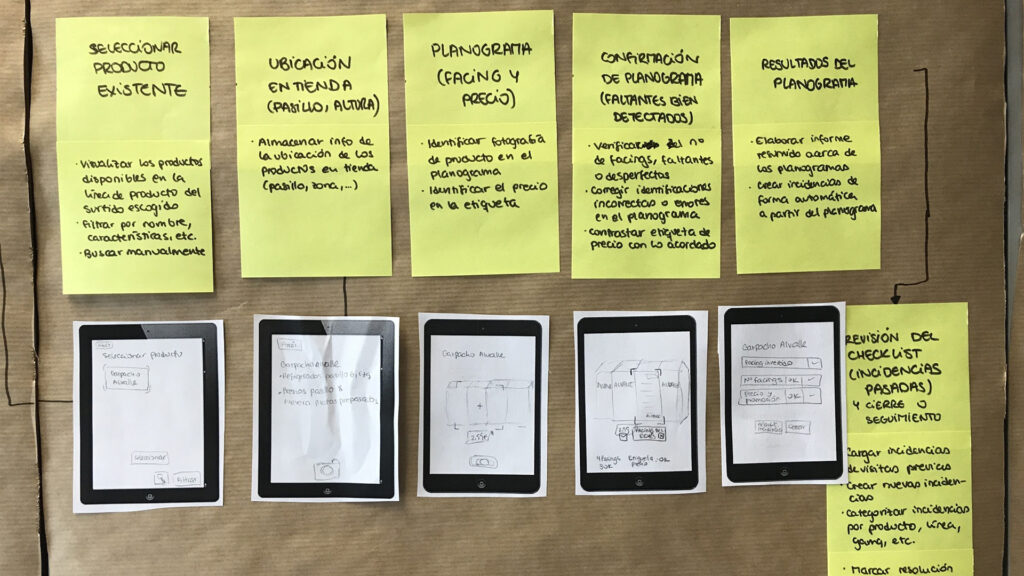
Mapping AI opportunities
In this phase, we identified areas where AI could add value by addressing user pain points and business goals. Tasks like analyzing pictures of shelving could clearly benefit from image recognition and predictive insights could be also useful to our customers. One challenge was ensuring AI features were both technically feasible back then, and aligned with user needs. Through collaboration and iterative design, we prioritized AI opportunities to make processes more efficient and improve decision-making.
Design
003
Defining and designing
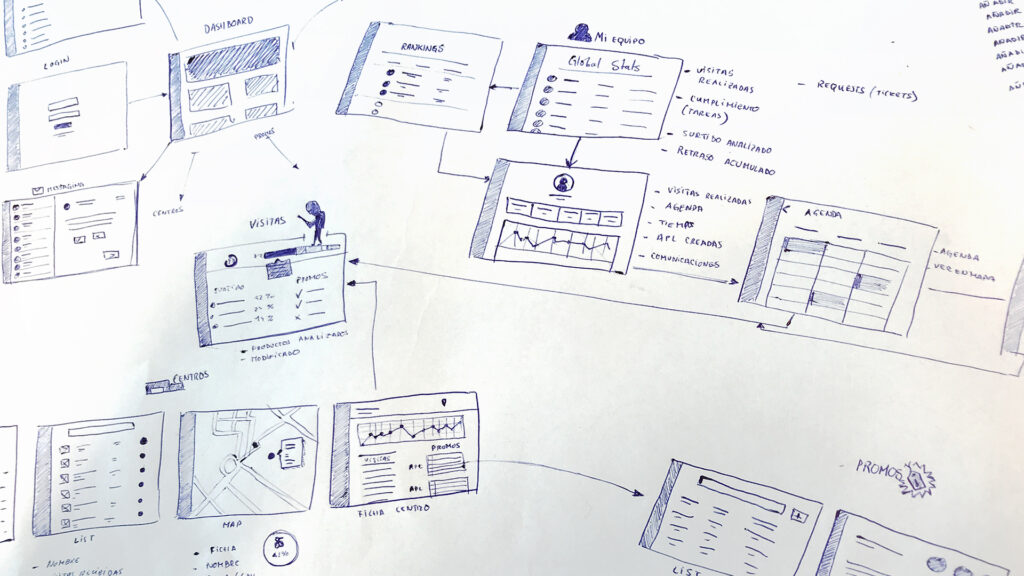
Desktop research
I compared AI-powered retail software, focusing on features, scalability, integration, pricing, and performance. The analysis included platforms for inventory management, customer analytics, and personalized shopping, evaluating their use of AI like machine learning and predictive analytics. This research identified strengths and weaknesses, helping to choose the best solution for retail needs.
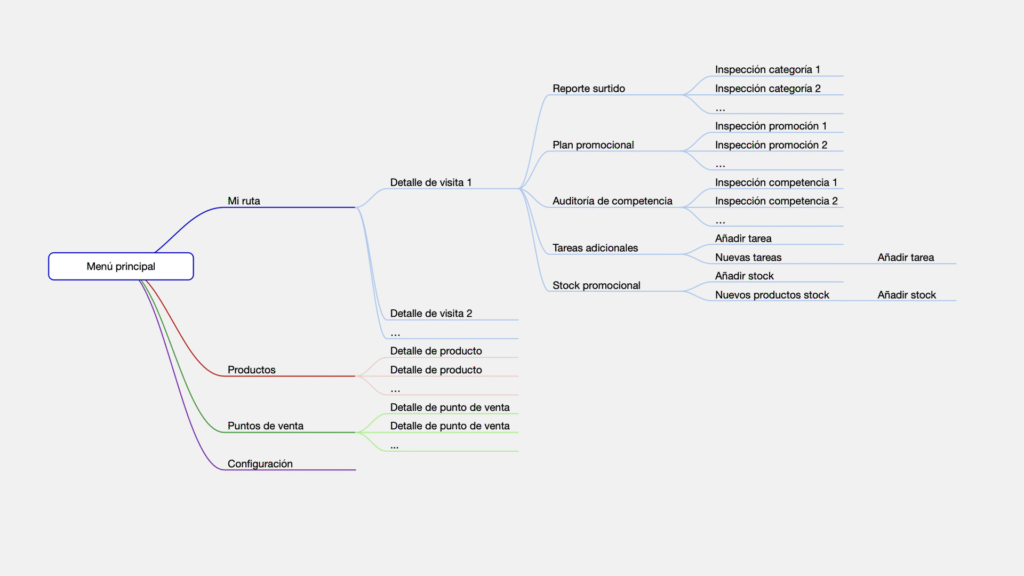
Information architecture
Information architecture was organized in a way to support fast, task-oriented navigation for field users with limited time during store visits. The layout prioritizes clarity and efficiency, and minimizing the number of steps needed to complete an inspection. I collaborated with final users to define product categories, naming conventions, and user flows that aligned with real-world retail processes and their mental models
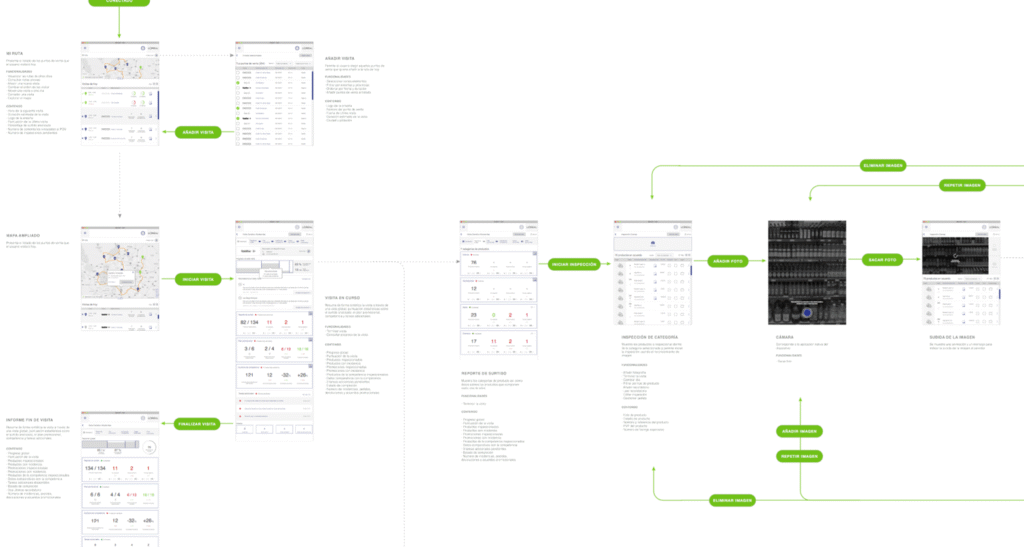
User flows
I compared AI-powered retail software, focusing on features, scalability, integration, pricing, and performance. The analysis included platforms for inventory management, customer analytics, and personalized shopping, evaluating their use of AI like machine learning and predictive analytics. This research identified strengths and weaknesses, helping to choose the best solution for retail needs.
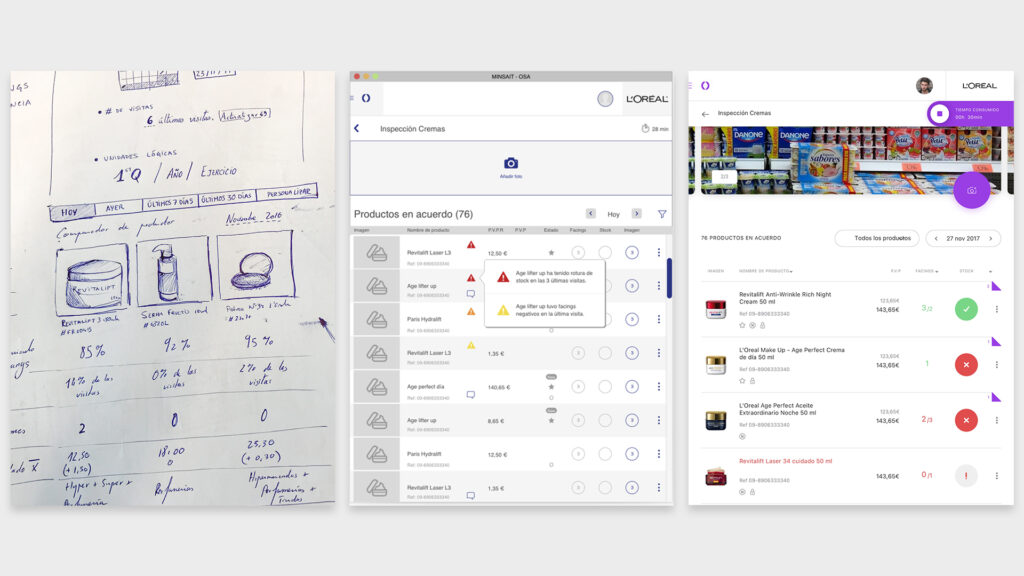
Prototyping
I began with quick hand-drawn sketches to explore layout ideas and key interactions for product inspection and stock management. These low-fidelity wireframes helped align early on with stakeholders and validate the core structure.
I translated the sketches into mid-fidelity prototypes, focusing on usability and logical workflows. Finally, I created high-fidelity mockups to using the new design system, focussed on visual hierarchy, and data visualization. This iterative prototyping process ensured the tool remained intuitive and functional across all design stages.
Development
004
Documenting
for development
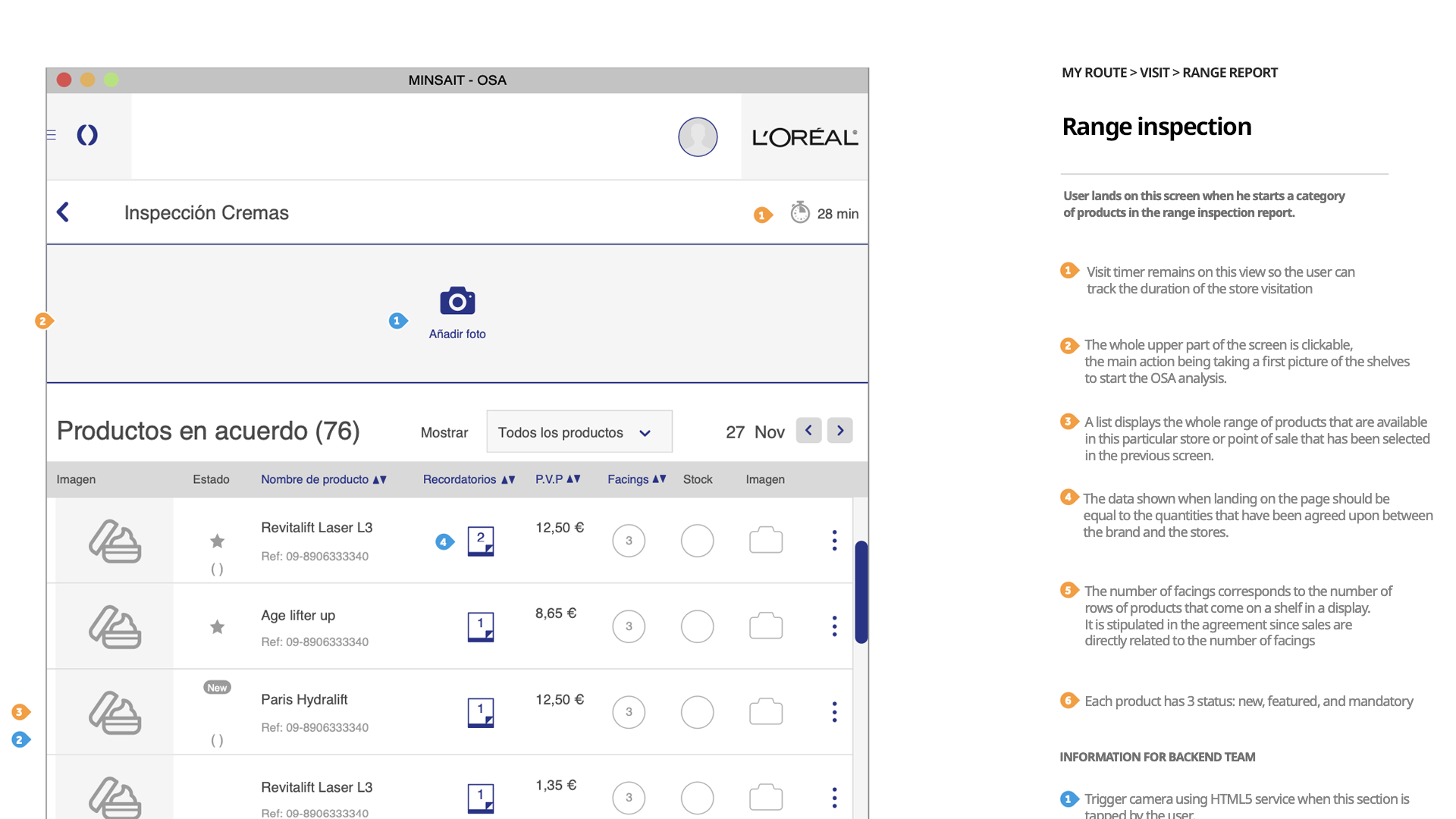
Throughout the design process, I maintained clear and structured documentation to support alignment with developers and stakeholders. Each screen was accompanied by wireframes annotated with numbered labels, linking directly to detailed functional descriptions. There is information about each feature and interaction, and indications for the backend and frontend teams that I feel might be relevant to the teams. This ensured that every interaction, data point, and business rule was explicitly defined, reducing ambiguity and facilitating a smooth handoff to the development team.
